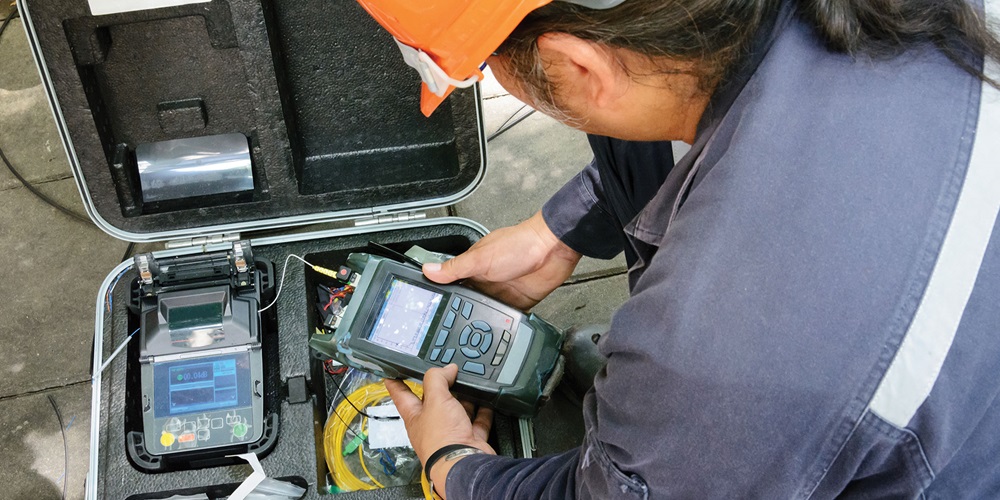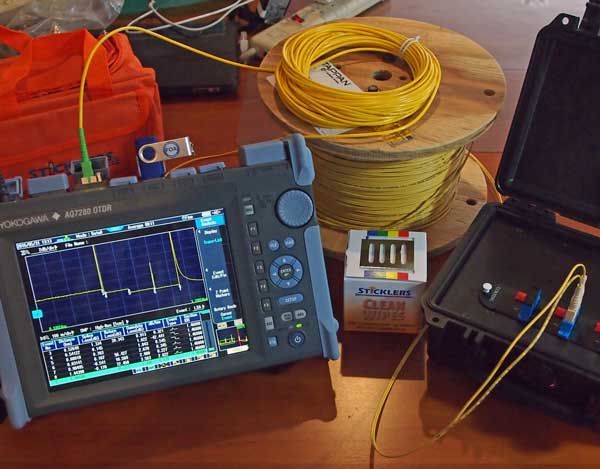The latest optical fibre testing equipment enhances troubleshooting and diagnostics in telecommunications.
Discover the Importance of Optical Fibre Testing in Modern Telecom
In the realm of modern telecommunications, the significance of optical fibre screening can not be overemphasized, as it offers as the foundation for ensuring network reliability and performance. What are the particular advantages that routine screening offers, and how might it shape the future landscape of telecommunications?

Understanding Optical Fibre Testing
Optical fiber screening is a critical process in telecommunications that ensures the stability and performance of fiber optic networks. This testing incorporates a variety of procedures designed to review the physical and practical characteristics of optical fibres - optical fibre diameter analyser. Secret specifications assessed consist of optical power loss, data transfer capability, and mistake place, which are important for maintaining top quality interaction links
The screening process commonly includes using customized tools such as Optical Time-Domain Reflectometers (OTDR) and Optical Power Meters. OTDRs are employed to identify and characterize mistakes, interlaces, and connectors within the fiber, while power meters determine the transmitted light signal strength to determine effectiveness.
In addition, screening is performed at different stages, including throughout installation, upkeep, and troubleshooting, to ensure that the network satisfies industry standards and functional requirements. Compliance with requirements established by organizations like the International Telecommunication Union (ITU) and the Telecoms Sector Association (TIA) is vital.
Benefits of Routine Examining
Regular testing of optical fibers returns various benefits that considerably boost network reliability and performance. One of the key benefits is the early discovery of potential concerns, such as breaks or destruction in the fibre, which can result in pricey downtime if left unaddressed (robotic vision). By determining these problems proactively, telecommunications carriers can reduce service disruptions and make sure regular connection for their consumers
In addition, regular screening aids to keep the honesty of signal top quality. As optical fibers age, their efficiency can be influenced by variables such as ecological problems and physical tension. Routine assessments permit the tracking of signal loss and general transmission effectiveness, ensuring that the network operates at optimal levels.
Another significant benefit is conformity with industry standards. Normal testing supports adherence to regulatory needs, therefore reducing lawful and monetary risks related to non-compliance. It enhances the general life-span of the fibre framework by helping with prompt maintenance and repair services.

Typical Examining Methods
Checking optical fibers uses various techniques to make certain the integrity and performance of telecoms networks. Amongst the most typical strategies is Optical Time Domain Reflectometry (OTDR), which examines the entire length of the fibre by sending out a pulse of light and measuring the reflections triggered by imperfections or breaks. This method supplies comprehensive details about the area and seriousness of mistakes.
One more widespread approach is using Optical Power Meters, which gauge the quantity of light transmitted via the fiber. This method aids figure out the loss of signal toughness, guaranteeing that it fulfills industry requirements. Additionally, Aesthetic Fault Locators (VFL) are used to identify breaks or severe bends in the fiber by forecasting a visible laser light right into the wire.
Insertion loss screening is additionally critical, as it evaluates the loss of signal power arising from links and mates within the network. The use of Polarization Setting Diffusion (PMD) testing evaluates the impact of fiber features on signal honesty.
Each of these techniques plays an important function in keeping the performance and integrity of optical fibre networks, inevitably adding to smooth telecoms procedures.
Influence On Network Efficiency
The honesty and efficiency of optical fiber networks straight influence overall network efficiency. In contemporary telecommunications, the performance of data transmission counts heavily on the quality of the read more optical fibers used. Any kind of deterioration in the fibre's problem-- whether due to physical damages, contamination, or excessive flexing-- can cause enhanced depletion and signal loss, dramatically influencing data integrity and rate.
Regular optical fiber testing is necessary to identify and fix potential concerns before they show up as network failures or stagnations. Strategies such as Optical Time Domain Reflectometry (OTDR) and insertion loss testing allow technicians to gauge the performance of fiber web links properly. These tests not just examine the physical problem of the fibres however additionally make sure compliance with market criteria, thus safeguarding the network's integrity.
Moreover, a properly maintained optical fibre network adds to reduced functional prices and improved consumer complete satisfaction, as end-users experience less interruptions and higher data rates. Inevitably, the emphasis on extensive optical fiber testing methods acts as a keystone for sustaining durable telecoms facilities, ensuring that company can satisfy the growing needs for data transfer and connectivity in today's digital age.
Future Trends in Checking
As we look in advance, innovations in technology are poised to reshape optical fibre screening in telecommunications. The increase of automation and artificial knowledge (AI) is expected to improve the effectiveness and precision of testing processes. Automated screening systems can perform extensive assessments with marginal human treatment, considerably minimizing the possibility for mistakes and accelerating time-to-deployment.
In addition, the assimilation of artificial intelligence formulas will enable anticipating upkeep, enabling network carriers to predict possible concerns before they escalate right into failings. This proactive approach not just enhances network reliability but additionally enhances operational costs.
An additional emerging trend is the growth of portable testing tools that use real-time analysis - fibre testing equipment. These fibre testing equipment devices will encourage service technicians to carry out on-site diagnostics quickly, helping with quicker resolutions and enhancing solution high quality
The growth of 5G networks even more necessitates the advancement of testing approaches. As bandwidth needs raise, typical screening strategies might no more are sufficient. Ingenious options such as optical time-domain reflectometry (OTDR) and advanced spectral analysis will become vital in guaranteeing the honesty and performance of high-speed links.

Final Thought
In verdict, optical fibre testing is crucial for guaranteeing the honesty and reliability of contemporary telecoms networks. Regular testing methods not only help identify possible concerns such as signal loss and faults but likewise contribute to enhanced network efficiency and consumer contentment. As the demand look what i found for smooth connection continues to grow, the adoption of sophisticated screening techniques will certainly play a crucial function in preserving high-grade network standards and supporting the progressing landscape of telecoms.